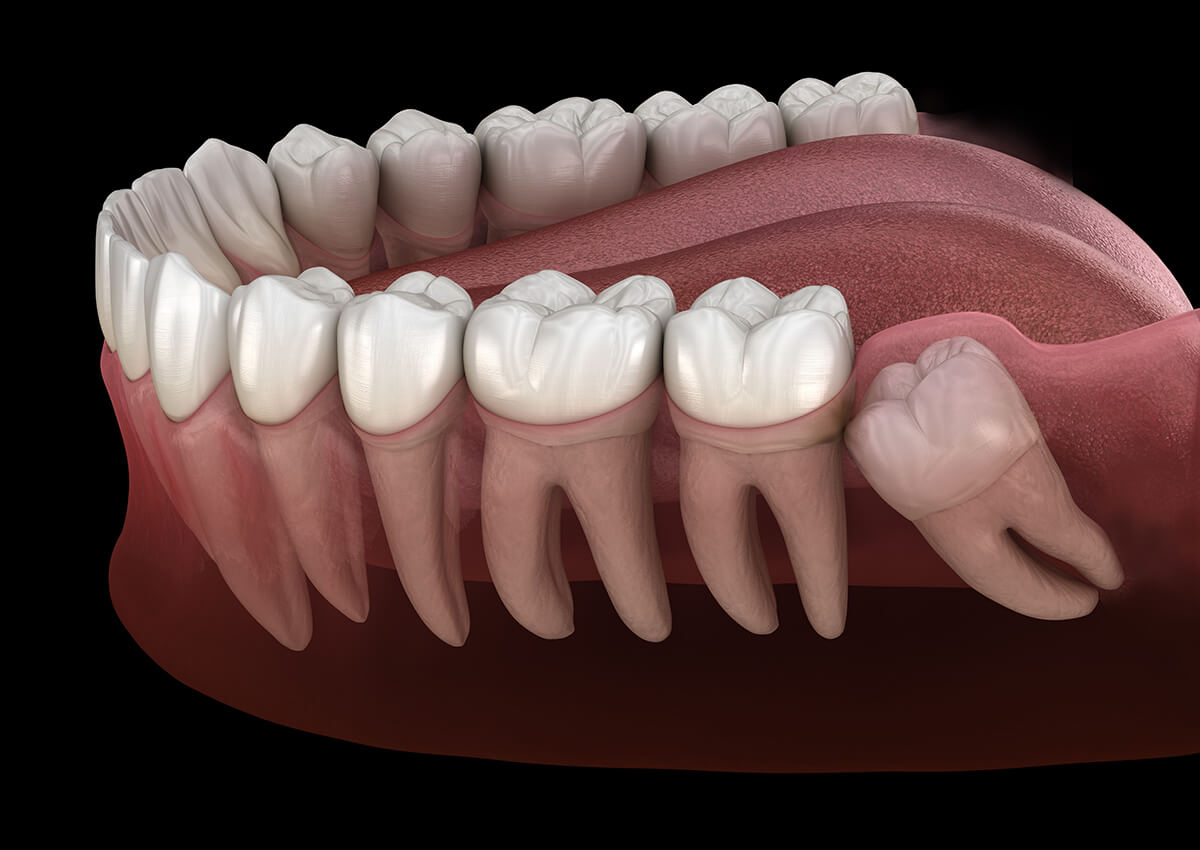Wisdom tooth extraction refers to the procedure of removing one or several wisdom teeth. The permanent adult teeth can be found in the top and bottom edges of your mouth. An extraction of the wisdom tooth may be required at some moment in your life. Third molars are also called wisdom teeth. They are often affected by other teeth and get trapped behind them. If not treated they can lead to irritation, infection, and other oral health problems. Wisdom tooth extractions are generally performed by a dentist, oral surgeon, and requires an incision of a tiny size to the bone and gum. Depending on the individual case, either general or local anesthesia might be applied. Here are some facts regarding wisdom tooth extractions.
Wisdom tooth extractions are generally performed by dental surgeons or an oral surgeon. Wisdom teeth are third molars, and they are typically the last ones to emerge. Wisdom teeth extractions are normally recommended when they’re affected, which means they develop at an angle, and then push against the other teeth. Wisdom tooth extractions are also recommended when the Wisdom teeth aren’t properly erupting or when they crowd other teeth, causing difficulties in chewing or speaking. Wisdom tooth extractions can be carried out under local anesthesia intravenous sedation, or general anesthesia. The extent of the procedure and the patient will determine the kind of anesthesia utilized. Wisdom tooth extractions typically take between 30 and an hour. Patients might experience swelling and discomfort following the procedure. Most people recuperate from Wisdom tooth extractions within several days and are able to return to normal routines shortly after.

They typically require a tiny cut through the gum tissue and bone. They are usually the teeth that will be removed the most and generally appear around the end of teens or in early 20s. Wisdom teeth are not the issue for all people. Wisdom teeth can cause swelling, crowded and discomfort for some. Wisdom teeth could need to be extracted if they are impacted (stuck between the gum tissue or bone) or affected by decay or infection or are creating pain or causing crowding. An oral surgeon typically performs wisdom tooth extractions. typically, they require a small incision in the gum tissue and bone. Extractions of wisdom teeth in outpatients are feasible and usually be done in just a few days. In some instances, Wisdom tooth extractions are required in an emergency situation when the tooth is in severe discomfort or has an infection.
Wisdom tooth extractions are a typical dental procedure however this doesn’t mean they’re essential. In some cases, wisdom teeth can be left in place and not cause any issues. However, there are certain situations that require you to remove them. Below are three signs that your wisdom teeth might require to be extracted.
1. Wisdom Teeth Impaction is a condition that occurs when wisdom teeth get stuck in the jawbone, gums, or the gums. They are unable to erupt normally. This could result in pain, inflammation, and even harm to adjacent teeth. To prevent further problems, your dentist may recommend the extraction of wisdom teeth.
2. You’ve got Wisdom Teeth Cysts Wisdom teeth may also develop cysts. These are fluid-filled sacs that can damage the surrounding bone and tissue. If you’ve got a Wisdom tooth cyst, your dentist will likely recommend removal to stop further injury.
3. Wisdom Teeth Infection. If your wisdom teeth have been infected it is vital to seek treatment immediately. Wisdom tooth infection can cause serious damage to your jawbone and surrounding teeth. Emergency extraction may be required to avoid the development of further problems.
It is recommended to see a dentist if you are experiencing any of these symptoms. They will assess the severity of your Wisdom teeth require to be extracted.
For more information, click edmonton emergency dental clinic